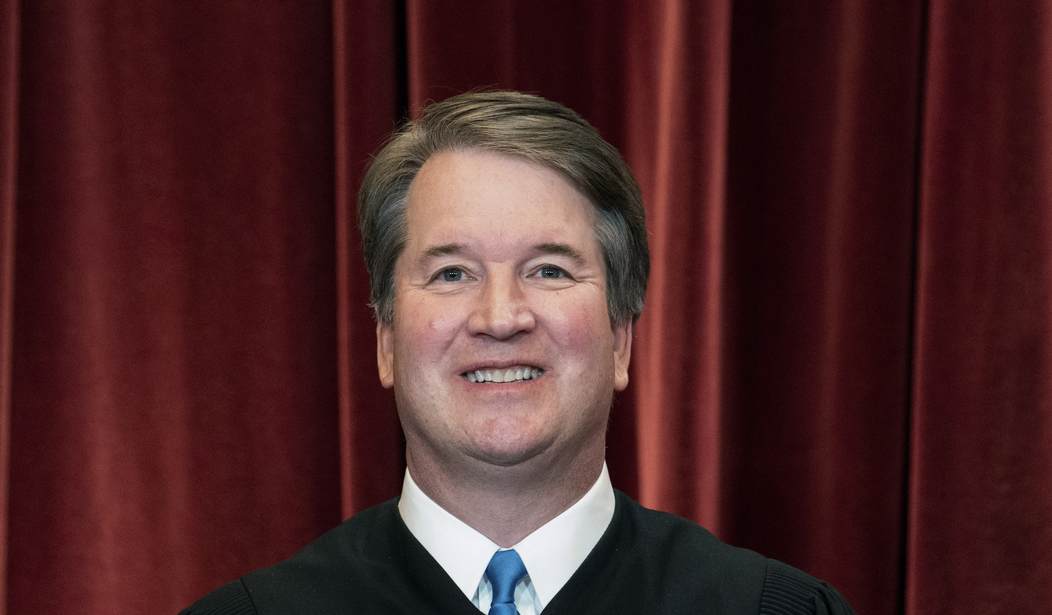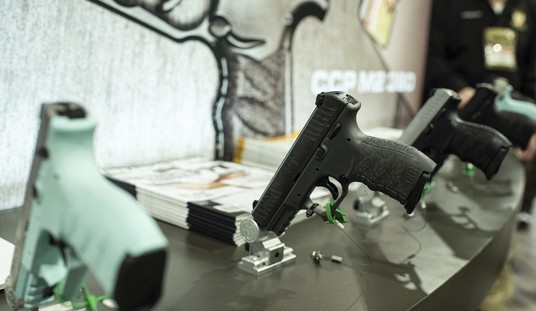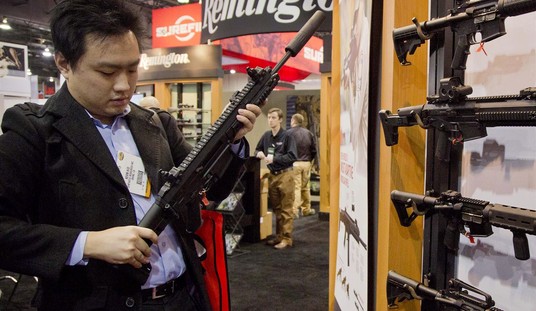Not really, but when faced with the existential threat posed by the Bruen decision to its fundamental premise, I can understand why the gun control lobby is looking for any shred of hope that their gun ban plans haven’t been entirely undone by the Supreme Court.
Writing at HuffPost, Paul Blumenthal tries to make the case that Justice Brett Kavanaugh’s concurrence in the Bruen decision could open the door for “some limits on the majority opinion.” The problem for Blumenthal is that the actual opinion by the justice doesn’t offer much evidence to back up his case.
Kavanaugh and Thomas wrote “separately to underscore two important points about the limits of the Court’s decision,” according to the concurrence.
The first limit on the decision is that the ruling striking down New York state’s concealed carry permitting law only applies to the six other states with similar “may issue” laws.
“[T]he Court’s decision does not prohibit States from imposing licensing requirements for carrying a handgun for self-defense,” Kavanaugh writes.
What the decision does not prohibit, according to Kavanaugh, are “shall issue” laws that only require a background check or firearms safety training to obtain a concealed carry permit rather than New York’s far more restrictive permitting law.
This is fairly similar to the language in Thomas’ majority opinion. The main difference is that Thomas includes in a footnote the possibility of striking down elements of “shall issue” laws if they have provisions that are “put towards abusive ends.”
“[B]ecause any permitting scheme can be put toward abusive ends, we do not rule out constitutional challenges to shall-issue regimes where, for example, lengthy wait times in processing license applications or exorbitant fees deny ordinary citizens their right to public carry,” the footnote states.
So Kavanaugh makes clear that the Bruen decision only applies to “may issue” statutes that rely on a “good cause” or “justifiable need” standard, while Thomas additionally notes that the Court could also consider challenges to other policies that end up resulting in the deprivation of rights for those seeking to legally bear arms in self-defense. But Blumenthal also leaves out this portion of Kavanaugh’s concurrence, in which he makes the exact same point as Thomas:
Unlike New York’s may-issue regime, those shall-issue regimes do not grant open-ended discretion to licensing officials and do not require a showing of some special need apart from self-defense. As petitioners acknowledge, shall-issue licensing regimes are constitutionally permissible, subject of course to an as-applied challenge if a shall-issue licensing regime does not operate in that manner in practice.
Kavanaugh is making the point that “shall issue” regimes weren’t the issue here, but he echoes Thomas in noting that even those laws can be called into question if they’re “shall issue” in name only. He’s not undercutting or undermining Thomas’ point. He’s agreeing with it.
The second limit in Kavanaugh’s concurrence is a reiteration of the statement in the 2008 decision in Heller v. District of Columbia, which found an individual right to bear arms in the Constitution’s Second Amendment, that the decision was “neither a regulatory straightjacket nor a regulatory blank check.” States and the federal government could still adopt some restrictions on firearms.
Kavanaugh includes a large block quote from the Heller decision to underscore that the majority decision had not stripped the ability of the government to regulate guns in every manner. Those regulations mentioned as permissible include “possession of firearms by felons and the mentally ill, or laws forbidding the carrying of firearms in sensitive places such as schools and government buildings, or laws imposing conditions and qualifications on the commercial sale of arms.” But that list is not “exhaustive,” meaning others could exist.
It’s true that Kavanaugh included a couple of paragraphs from the Heller decision, but once again Blumenthal leaves out the context for why he did so. Kavanaugh was indeed trying to make the point that not all gun control laws are going to be held unconstitutional, but he also quoted a portion of Scalia’s opinion that made it clear that some things were also off the table:
“Like most rights, the right secured by the Second Amendment is not unlimited. From Blackstone through the 19th-century cases, commentators and courts routinely explained that the right was not a right to keep and carry any weapon whatsoever in any manner whatsoever and for whatever purpose. . . . [N]othing in our opinion should be taken to cast doubt on longstanding prohibitions on the possession of firearms by felons and the mentally ill, or laws forbidding the carrying of firearms in sensitive places such as schools and government buildings, or laws imposing conditions and qualifications on the commercial sale of arms. [Footnote 26: We identify these presumptively lawful regulatory measures only as examples; our list does not purport to be exhaustive.]
“We also recognize another important limitation on the right to keep and carry arms. Miller said, as we have explained, that the sorts of weapons protected were those in common use at the time. We think that limitation is fairly supported by the historical tradition of prohibiting the carrying of dangerous and unusual weapons.”
Kavanaugh didn’t have to include that last paragraph if he were only interested in soothing the troubled minds of gun control activists. By reminding readers that arms that are in common use are protected by the Second Amendment, Kavanaugh is also signaling that bans on so-called assault rifles are likely as constitutional as bans on handguns; i.e. not at all.
AR-15s are unquestionably in common use, given that they’re the most commonly-sold rifle in the country. Magazines that can hold more than 10 rounds of ammunition are also in common use, and comprise over half of all the magazines in the hands of legal gun owners. And there’s no historic analogue of banning commonly-owned rifles or handguns because technological advancements increased their capacity or rate of fire either. As a result, under the test laid out by Thomas and endorsed by Kavanaugh it’s impossible for me to see how bans on modern sporting rifles and “large capacity” magazines could pass constitutional muster.
So no, I don’t think Kavanaugh’s concurrence should give gun control activists hope that the fundamental premise of their movement can still be achieved despite what Heller, McDonald, and now NYSPRA v. Bruen. They’ll still try, of course, and we’re in a for a busy few years in the courts, Congress, and state legislatures, but the Kavanaugh concurrence isn’t going to be of any real help to the gun control lobby.









Join the conversation as a VIP Member